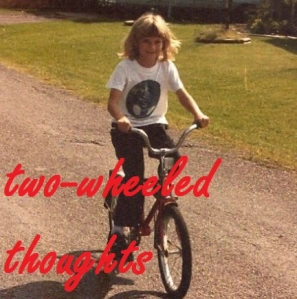 This book took me on such journeys and brought me so much joy and enjoyment and laughter and more difficult but also rewarding feelings; I have long felt that Jemisin is a rare master, but this may be the pinnacle. I love this book. I was once mildly disappointed with novella-length versions of her world; but here she clearly perfected the short story. And I was so pleased with the wide variety of worlds we got to dip into. Every story is unmistakably Jemisin, but each is also so different. They range in the impressions they give of settings in time and in space, from recognizably referring to our world to being fairly far afield; some are set in the worlds of her novels, some stand alone, and a few closely answer another author’s work (more on that in a minute). Some, similarly, seem to fit into a timeline of our own world, while others stand apart. But they all have the flavor. I went back to immediately reread one story in particular as soon as I finished the book, and that’s a rare move.
This book took me on such journeys and brought me so much joy and enjoyment and laughter and more difficult but also rewarding feelings; I have long felt that Jemisin is a rare master, but this may be the pinnacle. I love this book. I was once mildly disappointed with novella-length versions of her world; but here she clearly perfected the short story. And I was so pleased with the wide variety of worlds we got to dip into. Every story is unmistakably Jemisin, but each is also so different. They range in the impressions they give of settings in time and in space, from recognizably referring to our world to being fairly far afield; some are set in the worlds of her novels, some stand alone, and a few closely answer another author’s work (more on that in a minute). Some, similarly, seem to fit into a timeline of our own world, while others stand apart. But they all have the flavor. I went back to immediately reread one story in particular as soon as I finished the book, and that’s a rare move.
How Long opens with an author’s introduction in which she shares her coming-of-age as a writer, her growth as a short story writer, and the struggle of being a Black woman in fantasy and science fiction, among other things. “The stories contained in this volume are more than just tales in themselves; they are also a chronicle of my development as a writer and as an activist.” For this reader, at least, it felt right to come to this collection after having read all the novels (I haven’t read all her work as published in various places, but I’ve read all the books); I felt familiar with the writer now offering a look back across those years. Such a treat. Also, I hope she lives to write many books for a long, long time more.
The first story in the collection is “The Ones Who Stay and Fight,” which is quite explicitly a response to Ursula Le Guin’s “The Ones Who Walk Away From Omelas.” This was, again, a real treat for me; I’ve read “Omelas” for a couple of classes in which I was a student and also taught it for several years, so I’ve looked pretty closely at its concepts as well as its sentences, and that was an excellent preparation to appreciate Jemisin’s strong response in both its concepts and its sentences. To match the voice and style of another writer is not ‘mere’ imitation but a serious accomplishment in itself, and this story does that well. Jemisin has a fiery answer to Le Guin’s troubled false utopia; her Um-Helat is not “that barbaric America” nor “Omelas, a tick of a city, fat and happy with its head buried in a tortured child.” She’s got a different idea, and exhorts the reader to come along, “get to work.” (The direct address comes from Le Guin, but Jemisin grasps it firmly.) I was so delighted with this opening story, I could hardly stand it.
Other favorites include “Red Dirt Witch,” “L’Alchimista,” “The Effluent Engine,” “The Evaluators,” “Henosis,” and “The Elevator Dancer” – is Orwell just this much in our society, or in my head (recently Julia), or is this an explicit play on 1984? To emphasize the range of these stories, I will attempt a few one-line description/summaries:
- “Red Dirt Witch”: The White Lady threatens Emmaline’s family, but she knows the red dirt of Alabama, and the magic it holds, too well to go down easily.
- “L’Alchimista”: As a professional chef, Franca has fallen far, but she can’t resist a challenge; when a mysterious stranger shows up at her little kitchen in Milan, she will discover her art holds even greater power than she knew.
- “The Effluent Engine”: In historical New Orleans, a Haitian spy looks for technological advantage and finds also love. (Jemisin’s website calls it “a swashbuckling adventure-romance set in 1800s New Orleans with secret societies, derringers, and bustles.” Love!)
- “The Evaluators”: Human contact with alien species is highly regulated; why is this one trade contract being rushed? Danger! (Strong hints of Octavia Butler’s Lilith’s Brood series.)
- “Henosis”: In out-of-order chapters, a famous author is kidnapped by his biggest fan.
- “The Elevator Dancer”: Security guard secretly, shamefully, watches a subversive act of dance.
Bonus: many of these stories are available elsewhere, linked from Jemisin’s site, if you’d care to go hunting that way.
This book has left my mind changed, and I’ve stepped away and back to it. Strongly recommend.
Rating: 10 frava roots.
Filed under: book reviews | Tagged: fantasy, Jemisin, race, sci fi, short stories, speculative fiction | 2 Comments »
 This is the third in a trilogy, following A Spark of White Fire and A House of Rage and Sorrow. And it had me pretty rapt, y’all. I was on the edge of my seat throughout, and I cried at the end, but in a good way, which makes me feel glad for the newly-12-year-old I’ve just gifted it to for her birthday. (I teased her that she had to wait because these books are labeled 12 and up!) The world we have come to care about over three books is in great peril, as are the relationships we’ve invested so much in. And it’s not that nobody we love is lost in this book; but it all ends in a way that feels right.
This is the third in a trilogy, following A Spark of White Fire and A House of Rage and Sorrow. And it had me pretty rapt, y’all. I was on the edge of my seat throughout, and I cried at the end, but in a good way, which makes me feel glad for the newly-12-year-old I’ve just gifted it to for her birthday. (I teased her that she had to wait because these books are labeled 12 and up!) The world we have come to care about over three books is in great peril, as are the relationships we’ve invested so much in. And it’s not that nobody we love is lost in this book; but it all ends in a way that feels right.














